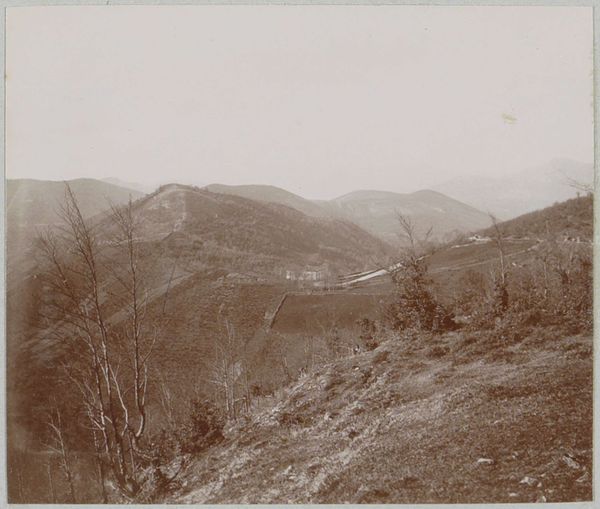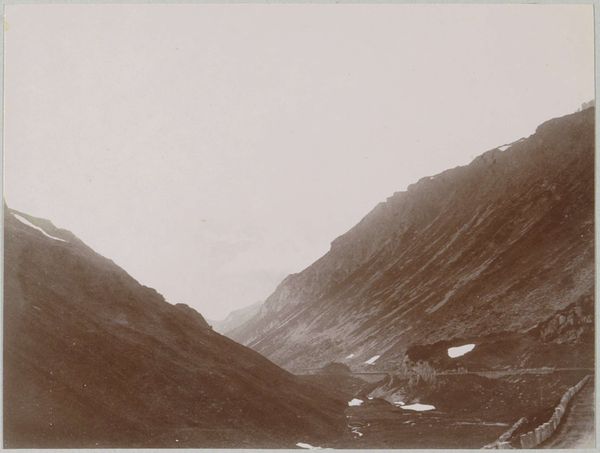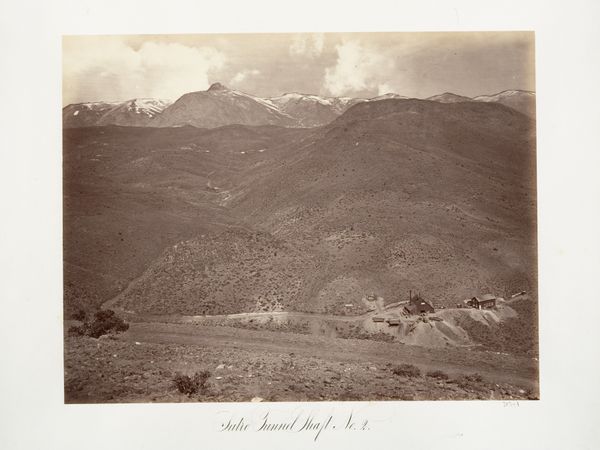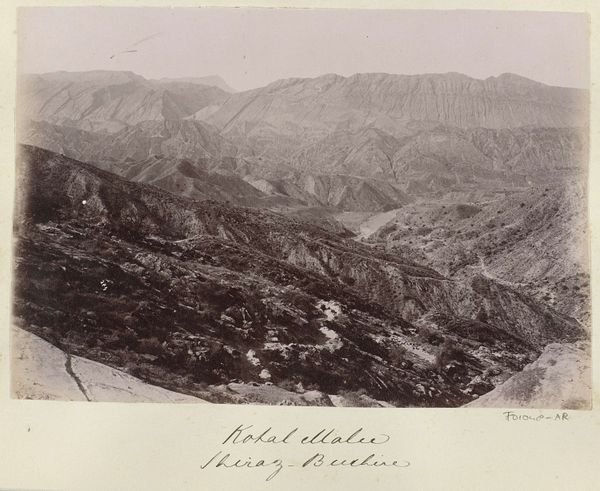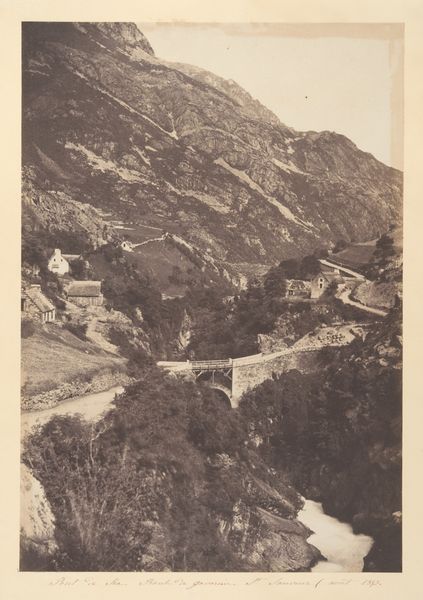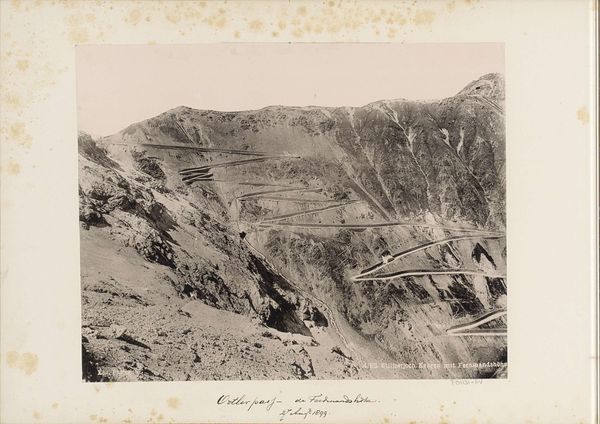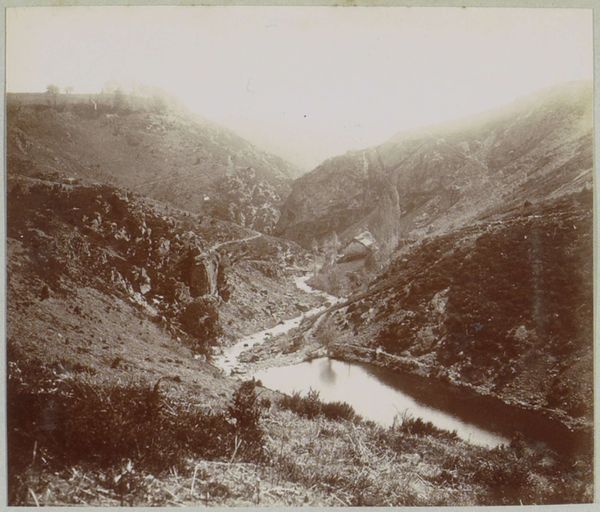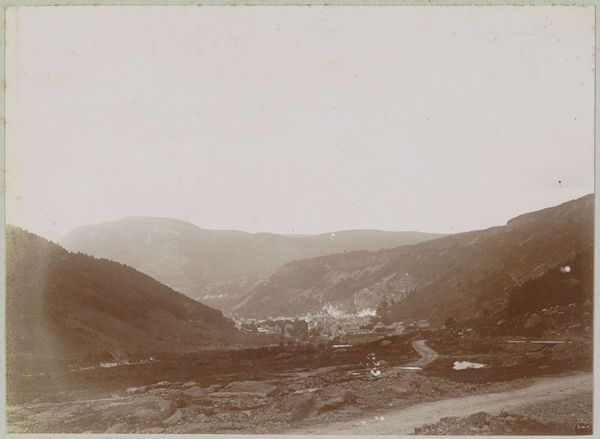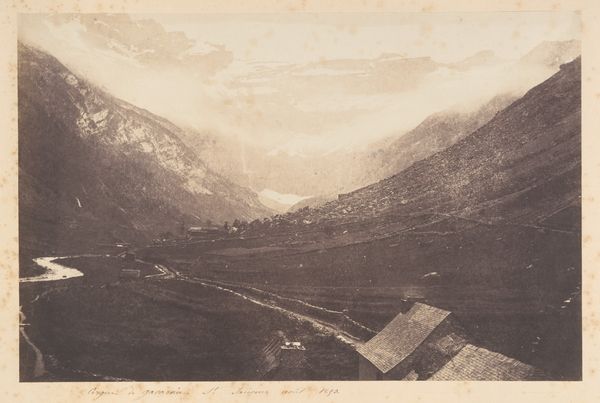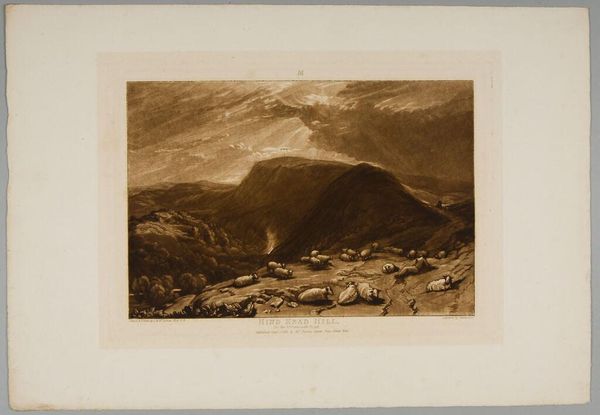
plein-air, photography
#
plein-air
#
landscape
#
nature
#
photography
#
realism
Dimensions: height 170 mm, width 230 mm, height 322 mm, width 498 mm
Copyright: Rijks Museum: Open Domain
Curator: It's immediately striking how this landscape evokes such a hushed, almost somber feeling, don't you think? Editor: Indeed. Let's provide some context. This is a photograph titled "Gezicht op berglandschap met sneeuwtoppen", which translates to "View of Mountain Landscape with Snowy Peaks," believed to have been taken between 1886 and 1896 by Henry Pauw van Wieldrecht. It resides here at the Rijksmuseum. Curator: Van Wieldrecht has really managed to capture the essence of plein-air photography. Note the way the light and shadow define the mountain contours; it lends a subtle but tangible feeling of spatial depth. There's a clear effort to honestly portray the conditions of the setting, perhaps prioritizing realism over romanticism. Editor: But what does the rise of photography at this time allow that traditional landscape painting might not? Photography's inherent mechanical nature lends credence to the ideals of realism. A drive to represent landscapes truthfully can easily be seen as an objective approach rather than artistic indulgence. Curator: Certainly. And look how that single, bare tree in the foreground acts as a focal point, anchoring the viewer's eye. The negative space surrounding the mountains leads the eye up and inward. It's very carefully considered formal structure. Editor: Right, but to think of how the emerging medium allowed an expansion of our notions of leisure! Travel became increasingly possible and popular for upper-class Europeans. Here, photography acts not just as documentation, but serves to establish the credibility of the journey itself! Curator: You make a fair point! So the image acts as both objective view, but it is also intrinsically tied up in culture. To see how form and the historical moment work together is endlessly compelling! Editor: Absolutely, a perfect interplay of socio-historical narrative and striking composition!
Comments
No comments
Be the first to comment and join the conversation on the ultimate creative platform.
